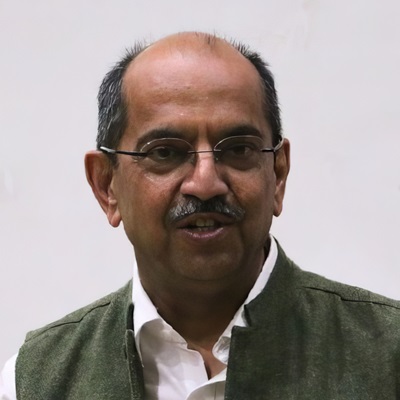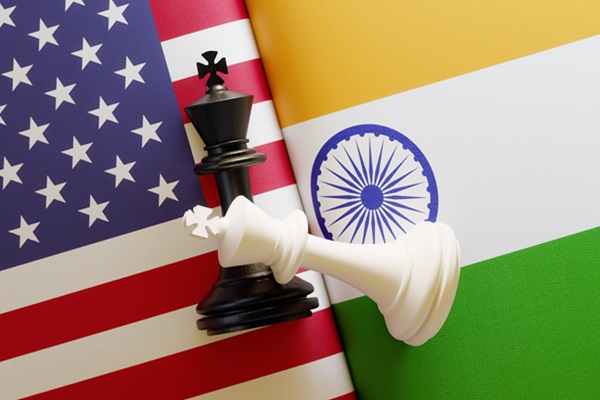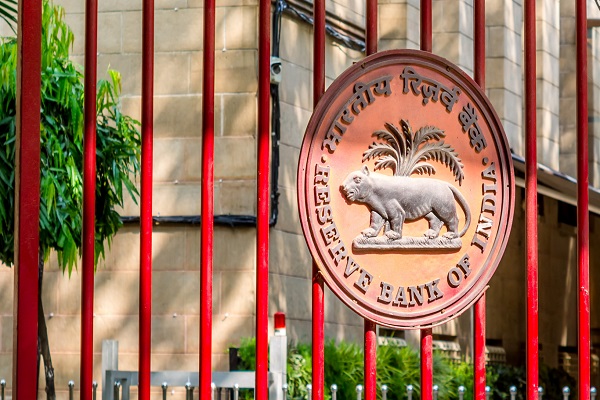.png)

Vijay Singh Chauhan, a former IRS official, is a trade expert, working as Executive Director with Deloitte Touche Tohmatsu India* and Senior Visiting Fellow at Isaac Centre for Public Policy, Ashoka University.
March 27, 2025 at 7:17 AM IST
What is a reasonable timeframe to conclude a bilateral trade negotiation between the world’s largest and one of the fastest growing economies? If that sounds too large a mandate, make that early harvest tariff negotiations. Can even this be concluded within a week?
As US trade negotiators engage with their Indian counterparts in well-publicised meetings at Vanijya Bhawan since Tuesday, the pressing question on everyone's mind is whether they can reach an agreement--or at least something resembling one--before the April 2 deadline. The key challenge lies in satisfying the chaotic guidance emerging from the White House. If they fail, India--often derisively labelled as the “Tariff King”--will, along with other nations accused of “unfair” trade practices, face “reciprocal tariffs”.
It is a different matter that Indian tariff rates, with a weighted average of 12%, are well within the World Trade Organization’s bound rates, even though admittedly they are much higher than the comparable US tariffs that are at 2.2%.
Taken at face value, to completely eliminate the possibility of reciprocal tariff, India will need to reduce the effective tariff rate on US imports to either 2.2% or face imposition of 12% average tariff on Indian exports to the US. This binary option is in the interest of neither country, nor is being considered as a likely position on April 2. Negotiations are all about give and take, or finding a middle ground. It is understood that trade negotiators are burning the proverbial midnight oil trying to find the middle ground. But finding that middle ground is not as simple as negotiating whether it will be 5%, 6% or 7%.
"The devil is in the details" may be a cliché, but it perfectly captures the current situation. India’s Customs tariff schedule, at the 8-digit level, includes around 12,000 lines, while the US tariff, at the 10-digit level, is even more extensive. Negotiating bilateral tariffs at such a granular level is virtually impossible.
In this regard, it is also important to note that very low average tariff of the US masks rather high peaks for a variety of niche products, quite noticeable in the case of textiles and garments.
What is perhaps more likely is that negotiators will focus on their top export and import items, seeking to protect their domestic industry or gain greater market access. The top Indian export items to the US include medicaments, diamonds, jewellery and precious stones, semiconductor devices, etc., whereas the top US exports to India include gold, petroleum and natural gas, diamonds, jewellery and precious stones, automatic data processing machines (or simply computers), etc.
Indian negotiators will need to maintain a fine balance between protecting the domestic industry interests by not conceding lower import duties and ensuring that the US does not hike the tariff, on say medicaments, which is a major item of Indian export.
The guidance emerging from the White House seems to suggest that "tariffs" now encompass not just traditional duties but also specific levies and non-tariff measures. Tariffs have seemingly become a catch-all "silver bullet" used to penalise countries linked to fentanyl or even those purchasing Venezuelan crude! This could be a tool to bring the countries to the bilateral negotiating table.
Since these measures cannot be easily quantified or compared, their inclusion complicates negotiations even further. Notably, as some commentators have pointed out, the US appears to be the real “non-tariff king,” having reported over 11,000 protectionist measures to the WTO between 2009 and 2025, the highest in the world. In contrast, India has reported just 2,500 in the same period. Hopefully, Indian negotiators will ensure that any concessions on tariffs are matched by reductions in US non-tariff barriers.
Negotiation theories, from the classic “Prisoner’s Dilemma” to the “Battle of the Sexes,” are fascinating in theory, but far more stressful in practice. Hopefully, Indian and US negotiators see this as a non-zero-sum game. Because if they treat it as zero-sum, this could quickly spiral into a more commonly understood trade war!
*Views expressed here are personal.
Also read:
Trump’s Tit-For-Tat Tariff Plan Calls For Agility
US May Demand More Than Its Pound Of Flesh In FTA Talks With India




